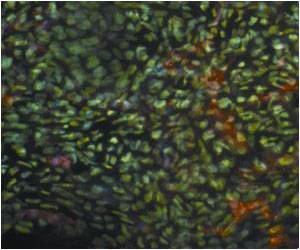Dogs, frogs, whales, snails can all do it, but humans and primates can't regrow nerves after an injury. Many animals have this ability, but humans don't.

"This research implies that we might be able to mimic neuronal repair processes that occur naturally in lower animals, which would be very exciting," says the study's senior author and Salk professor Kuo-Fen Lee. The results were published in PLOS Biology.
For a damaged nerve to regain function, its long, signal-transmitting extensions known as axons need to grow and establish new connections to other cells.
In a study published last summer in PLOS ONE, Lee and his colleagues found that the protein p45 promotes nerve regeneration by preventing the axon sheath (known as myelin) from inhibiting regrowth. However, humans, primates and some other more advanced vertebrates don't have p45. Instead, the researchers discovered a different protein, p75, that binds to the axon's myelin when nerve damage occurs in these animals. Instead of promoting nerve regeneration, p75 actually halts growth in damaged nerves.
"We don't know why this nerve regeneration doesn't occur in humans. We can speculate that the brain has so many neural connections that this regeneration is not absolutely necessary," Lee says.
In the new study, the scientists looked at how two p75 proteins bind together and form a pair that latches onto the inhibitors released from damaged myelin.
Advertisement
"For reasons that are not understood, when p45 comes in, it breaks the pair apart," says Lee, holder of the Helen McLoraine Chair in Molecular Neurobiology.
Advertisement
The findings suggest that an agent—either p45 or another disrupting molecule—that can effectively break the p75 pair could offer a possible therapy for spinal cord damage.One method of therapy could be to introduce more p45 protein to injured neurons, but a smarter tactic might be to introduce a small molecule that jams the link between the two p75 proteins, Lee says. "Such an agent could possibly get through the blood-brain barrier and to the site of spinal cord injuries," he says.
The next step will be to see if introducing p45 helps regenerate damaged human nerves. "That is what we hope to do in the future," Lee says.
Source-Eurekalert










